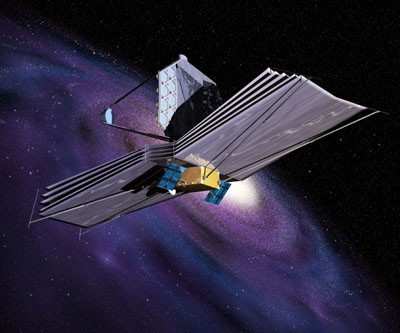Cryogenic Clean-Room Testing Simulates Extremes Of Space
The first of 18 mirror segments that will fly on NASA's James
Webb Space Telescope arrived this week at the Marshall Space Flight
Center, Huntsville, AL to prepare it to meet the extreme
temperatures it will encounter in space.

The X-ray & Cryogenic Facility (XRCF) at the Marshall Center
is the world's largest X-ray telescope test facility and a unique,
cryogenic, clean room optical test facility. Cryogenic testing will
take place in a 7,600 cubic foot helium cooled vacuum chamber,
chilling the Webb flight mirror from room temperature down to
frigid -414 degrees Fahrenheit. While the mirrors change
temperature, test engineers will precisely measure their structural
stability to ensure they will perform as designed once they are
operating in the extreme temperatures of space.
 "Getting the best performance requires conditioning and testing
the mirrors in the XRCF at temperatures just as cold as in space,"
said Helen Cole, project manager for Webb Telescope mirror
activities at XRCF. "Optical measurements of the 18 mirror segments
at cold temperatures will be made and used to create mirrors that
will focus crisply in space. This will allow us to see new wonders
in our Universe."
"Getting the best performance requires conditioning and testing
the mirrors in the XRCF at temperatures just as cold as in space,"
said Helen Cole, project manager for Webb Telescope mirror
activities at XRCF. "Optical measurements of the 18 mirror segments
at cold temperatures will be made and used to create mirrors that
will focus crisply in space. This will allow us to see new wonders
in our Universe."
NASA's James Webb Space Telescope is a large, infrared-optimized
space telescope that will be the premier observatory of the next
decade. It will study every phase in the history of our Universe,
ranging from the first luminous glows after the Big Bang, to the
formation of solar systems capable of supporting life on planets
like Earth, to the evolution of our own Solar System. Its
instruments will be designed to work primarily in the infrared
range of the electromagnetic spectrum, with some capability in the
visible range.
The Webb Telescope will have a large mirror, 6.5 meters (21.3
feet) in diameter, made up of 18 segments about 1.5 meters (4.9
feet) in size. The telescope's home in space will be about one
million miles from Earth. The completed primary mirror will be over
2.5 times larger than the diameter of the Hubble Space Telescope's
primary mirror, which is
2.4 meters (7.8 feet) in diameter, but will weigh roughly half as
much because it is made of beryllium, one of the lightest
applicable metals known to man.
The amount of detail a space telescope can see is directly
related to the size of the mirror area that collects light from the
universe. A larger area collects more light and can see deeper into
space and at a much higher resolution than a smaller mirror. That's
why the telescope's primary mirror is made up of 18 mirror segments
that form a total area of 25 square-meters (almost 30 square yards)
when they all come together.
What's unique about the large primary mirror is that each of the
18 mirrors will have the ability to be moved individually, so that
they can be aligned together to act as a single large mirror.
Scientists and engineers can also correct for imperfections after
the telescope opens in space, or if any changes occur in the mirror
during the life of the mission. Precision testing, like this test
cycle in the X-ray & Cryogenic Facility, provides detailed
measurements to fabricate and deliver a high resolution mirror.
"Beginning today, we kick off exclusive testing of the James
Webb Space Telescope mirrors which will run though 2011. Our
one-of-a-kind facility can provide the environment which allows us
to optically measure infinitesimally small changes in the mirrors
as they cool," said Jeff Kegley, XRCF testing manager.

The James Webb Space Telescope is expected to launch in 2013.
NASA's Goddard Space Flight Center in Greenbelt, MD is managing the
overall development effort for the Webb telescope. The telescope is
a joint project of NASA and many US partners, the European Space
Agency and the Canadian Space Agency.
 Aero-TV: DeltaHawks Diesel Power Steps Into the Spotlight
Aero-TV: DeltaHawks Diesel Power Steps Into the Spotlight NTSB Prelim: Mooney Aircraft Corp. M20K
NTSB Prelim: Mooney Aircraft Corp. M20K ANN FAQ: Turn On Post Notifications
ANN FAQ: Turn On Post Notifications ANN's Daily Aero-Linx (12.20.25)
ANN's Daily Aero-Linx (12.20.25) Aero-News: Quote of the Day (12.20.25)
Aero-News: Quote of the Day (12.20.25)





